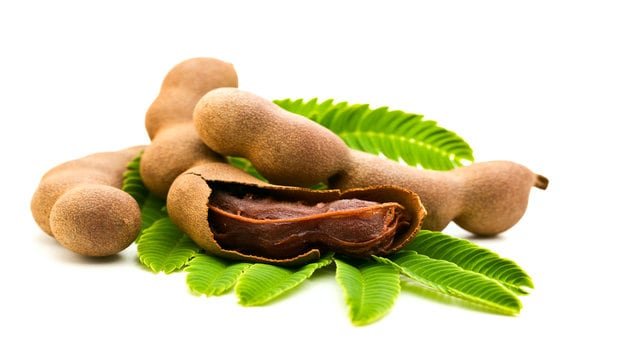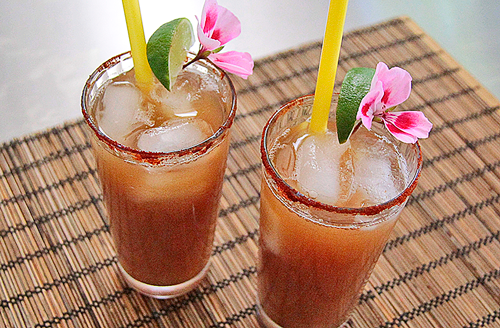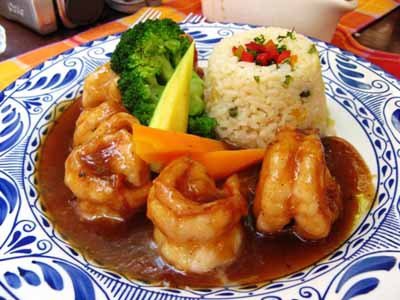Health & Beauty. delivery number 9: The Tamarind.
Greetings friends of steemit, welcome to my Blog.

Every day I will publish a fruit, vegetable or vegetable, highlighting its properties and benefits for health and beauty. In this way we will know more about the natural benefits that we can count on daily if we know more about the fruits, vegetables that we consume or that we see in the market and that we have not yet tested. In today's delivery I will talk about ...

Tamarind is the fruit of a plant called "Tamarindus indica": it is a perennial tropical tree that belongs to the family of legumes, which can reach up to 30 meters high, which produces pods about ten centimeters long that can contain about 4-12 seeds wrapped in a dark brown, edible pulp. The pulp is the most used part of the fruit.
Tamarind is an exotic fruit that has a bitter taste and its pulp has many therapeutic properties for the body. It consists of 31 percent water, 57 percent sugar, 5 percent fiber, 2.6 percent ash, 2.8 percent protein, and 0.6 percent fat.
All parts of the tamarind, from the pod to the seeds, through the pulp, are rich in proteins and flavonoids, so they have excellent nutritional qualities. This fruit can be considered a good source of all the essential amino acids.
The mineral salts and vitamins it contains are many: iron, potassium, phosphorus, magnesium, sodium, calcium, zinc, copper, selenium, vitamin A, vitamins of group B, C, E and K. There is also beta-carotene. The sticky pulp of this fruit is rich in food polysaccharides, such as hemucellulose, mucilage, pectin and tannins.


Protects the nervous system:
The consumption of tamarind, thanks to the presence of magnesium, promotes the well-being of the nervous system, the construction of the skeleton and the metabolism of fats.
Antibacterial:
The active ingredient found within tamarind seeds is tamarindine: this substance has an antibacterial effect resulting, therefore, effective against some viruses and bacteria and, for example, in the case of rheumatic fever. In particular, tamarindine has been shown to be an active component against Aspergillus niger, Candida albicans, Bacillus subtilis, Escherichia coli, Staphylococcus aureus and Pseudonas aeruginosa.
Digestive and purifying:
The intake of this fruit is useful for digestion, at the gastric level and also as an intestinal regulator. The fact that tamarind can be considered a discrete laxative should not be underestimated, thanks to the presence of potassium and organic acids, such as malic acid and tartaric acid, present in the fruit and in the leaves to macerate.
Protects the liver:
Tamarind extracts contain polyphenols that protect the cells of the liver, the protective properties of this organ are excellent and its consumption can facilitate both the emptying of the gallbladder and the prevention of biliary disorders.
Antitumor:
There are several antioxidants contained in tamarind pulp: from vitamin C to ellagic acid, through chlorogenic, caffeine and some flavones. Antioxidant substances have the ability to fight free radicals, delaying cellular aging and decreasing the risk of tumors.
Remineralizing:
Considered an excellent refreshing, tamarind is particularly useful in the summer to replenish the loss of mineral salts, when this is caused by excessive sweating.
Low fever:
Thanks to the high content of organic acids, it seems that it can also be used to help reduce fever. It provides a cooling effect to body temperature. Therefore, the beverage can be used to treat sunstrokes in tropical regions.
Control diabetes:
Eating tamarind decreases the absorption of carbohydrates, which the body can convert into sugars, thus avoiding glycemic peaks that are particularly dangerous for people with type 2 diabetes mellitus.
Protects the cardiovascular system
The good fiber content is useful to reduce the levels of cholesterol in the blood and its consumption prevents the formation of dangerous obstructions in the arteries, with benefits for cardiovascular health. Contains potassium (vasodilator electrolyte), relaxes the walls of blood vessels and promotes greater blood flow, lowering blood pressure.
Anti-anemic:
It contains iron and this ensures the correct amount of red blood cells in the blood, in this way, ensures adequate oxygenation of the organs and muscles of the body, ensuring optimal functioning. The iron content contrasts anemia and fatigue.
Eye care:
Tamarind pulp juice can be used to treat conjunctivitis. Eye drops are prepared using the traditional method that uses tamarind seeds to treat dry eye syndrome.
Anti-inflammatory:
Tamarind juice is anti-inflammatory and may be useful in treating sore throat. Gargle with tamarind juice to reduce pain and soothe sore throat. It can also be applied on the joints to soothe inflammation and pain.


Skin health:
Tamarind juice is excellent for healthy skin and to treat burns and prevent edema. Apply the juice to keep the skin bright and healthy. It can also reduce or eliminate scars from acne or common varicella on the face and other parts of the body. Tamarind juice contains enzymes, fiber, vitamin B, vitamin C and alpha hydroxyl acids that kill dead skin cells.
Anti-aging:
Tamarind seed extracts are beneficial for skin care. The tamarind seed increases the elasticity of the skin, provides hydration and softness. It contains hyaluronic acid that helps moisturize the skin and smoothes fine lines and wrinkles. Tamarind seed is soluble in water, so it is used for serums, gels, facial toners, moisturizers and masks. This also acts as an anti-aging formula.
Lose weight:
Tamarind juice can be very useful for weight loss and for the treatment of obesity.
Body scrub:
Tamarind juice is also used in cosmetics such as the tamarind mask and the facial scrub. It contains acids, minerals, dietary fiber and vitamin C which is a good blood purifier.
Take 3/4 of fresh tamarind pulp juice. Mix with 2 tablespoons of lemon juice, a little bicarbonate and 2 tablespoons of brown sugar. Mix well until it becomes a soft dough. Exfoliate with a sponge while you shower to have a shiny skin.


The tamarind is famous above all for the syrup that is obtained, but it can become the protagonist of many other recipes. In Asian cuisine, its pulp is used as a condiment and for the preparation of sauces, soups and other dishes that accompany rice. Tamarind juice is widely used in many states of India to prepare curries, salad dressings, its sweet and sour taste is highly appreciated and used as an acidifying agent. This fruit can also be used to flavor potatoes and various vegetables. Famous is the drink prepared with tamarind pulp or its jam, but the recipes are endless.
I hope you like this initiative ... you can make suggestions and propose fruits and vegetables for the next delivery.
References:

Congratulations! Your post has been selected as a daily Steemit truffle! It is listed on rank 23 of all contributions awarded today. You can find the TOP DAILY TRUFFLE PICKS HERE.
I upvoted your contribution because to my mind your post is at least 6 SBD worth and should receive 118 votes. It's now up to the lovely Steemit community to make this come true.
I am
TrufflePig, an Artificial Intelligence Bot that helps minnows and content curators using Machine Learning. If you are curious how I select content, you can find an explanation here!Have a nice day and sincerely yours,

TrufflePig